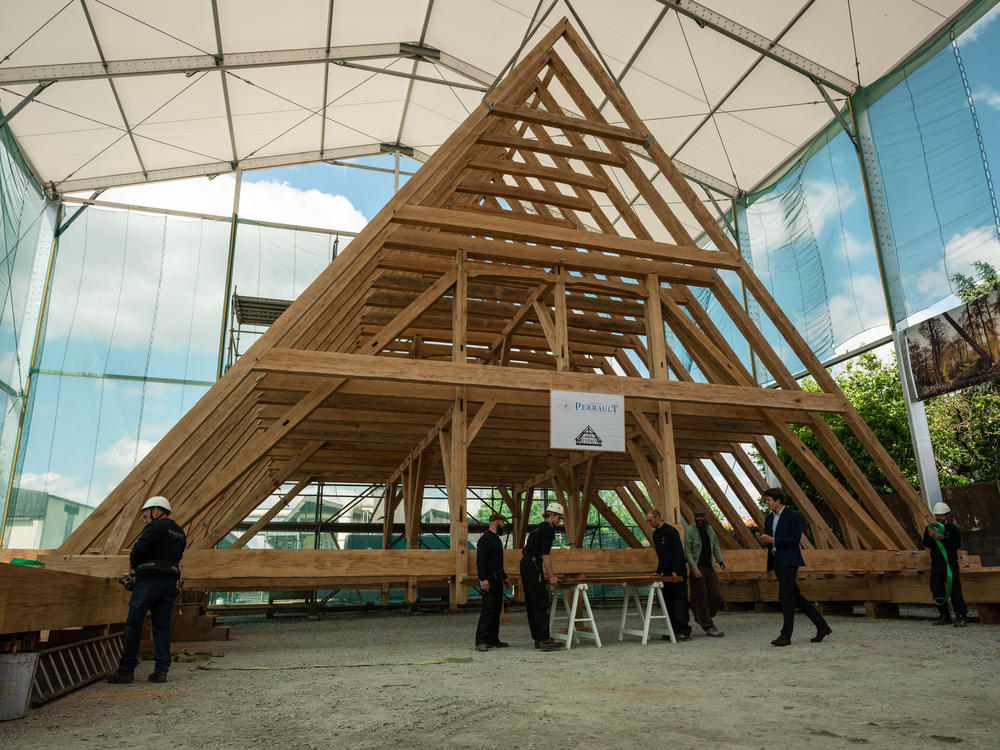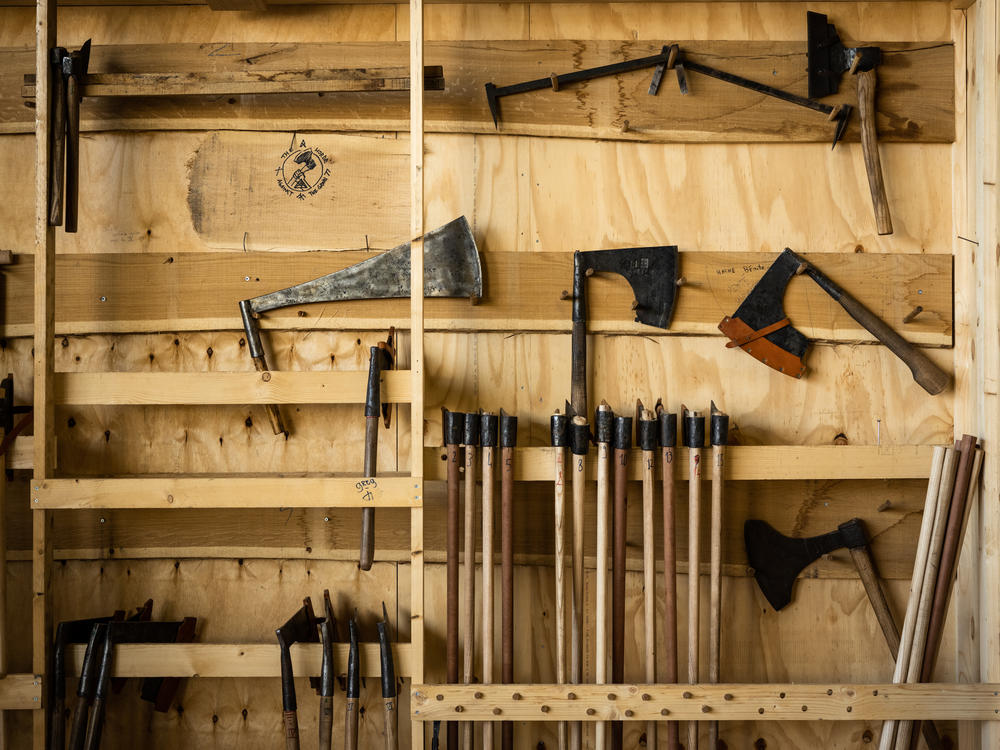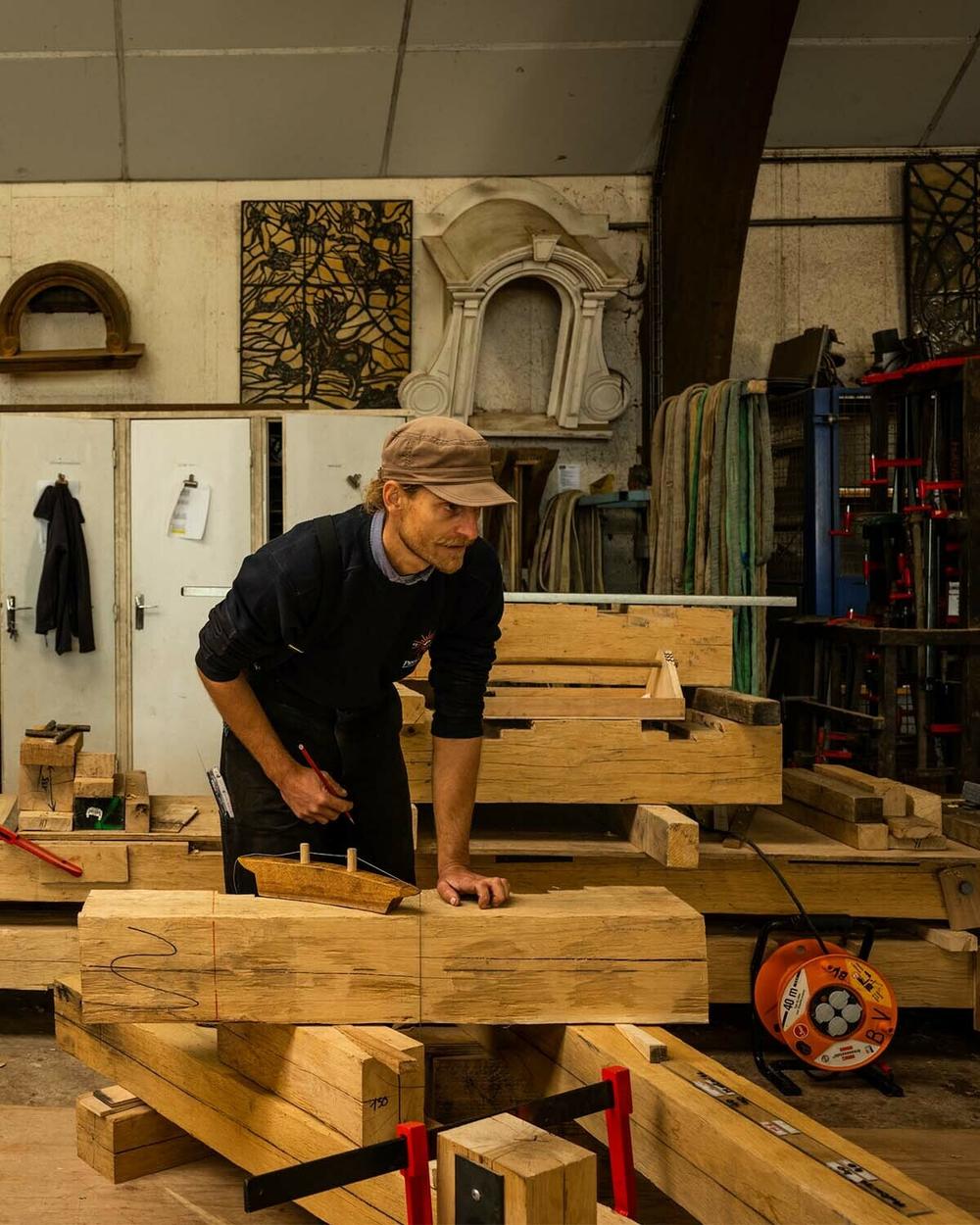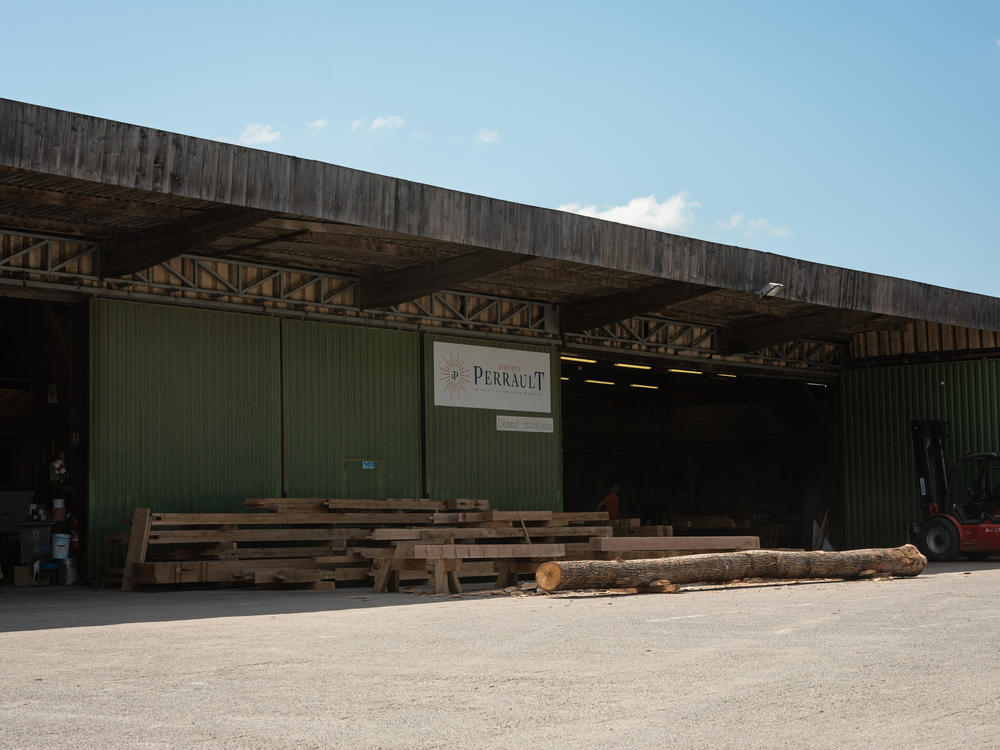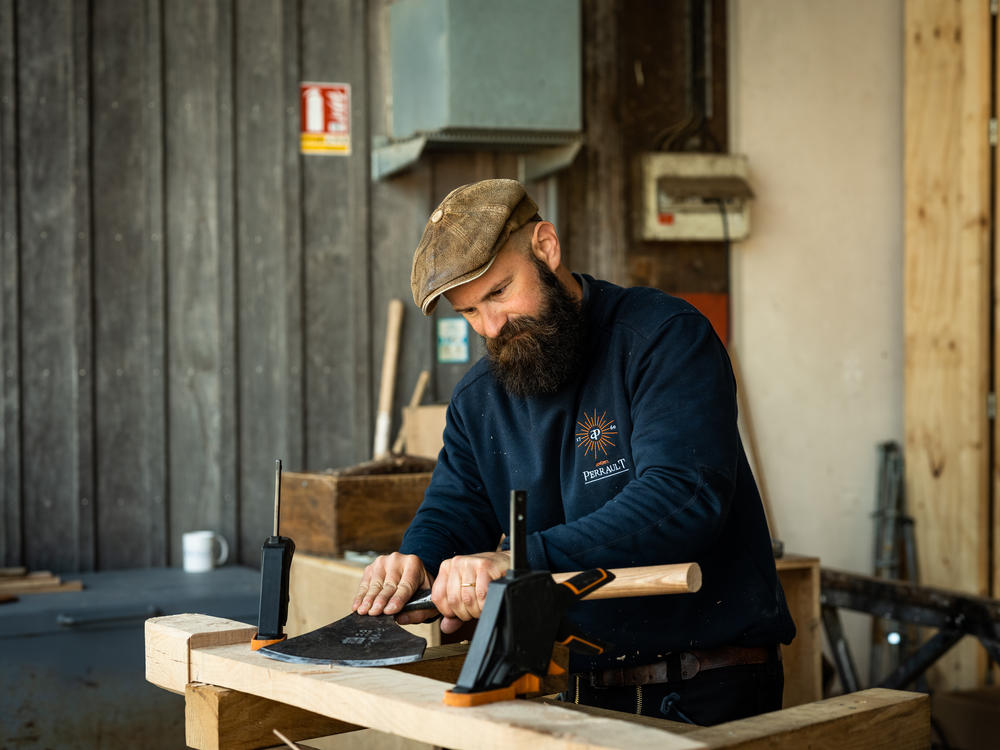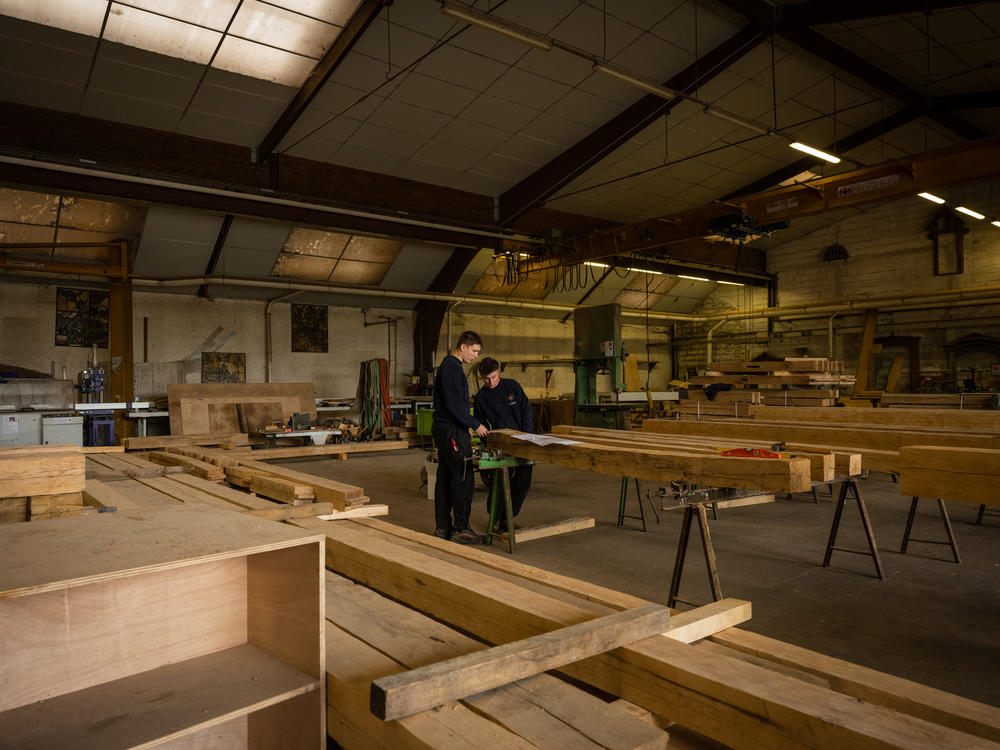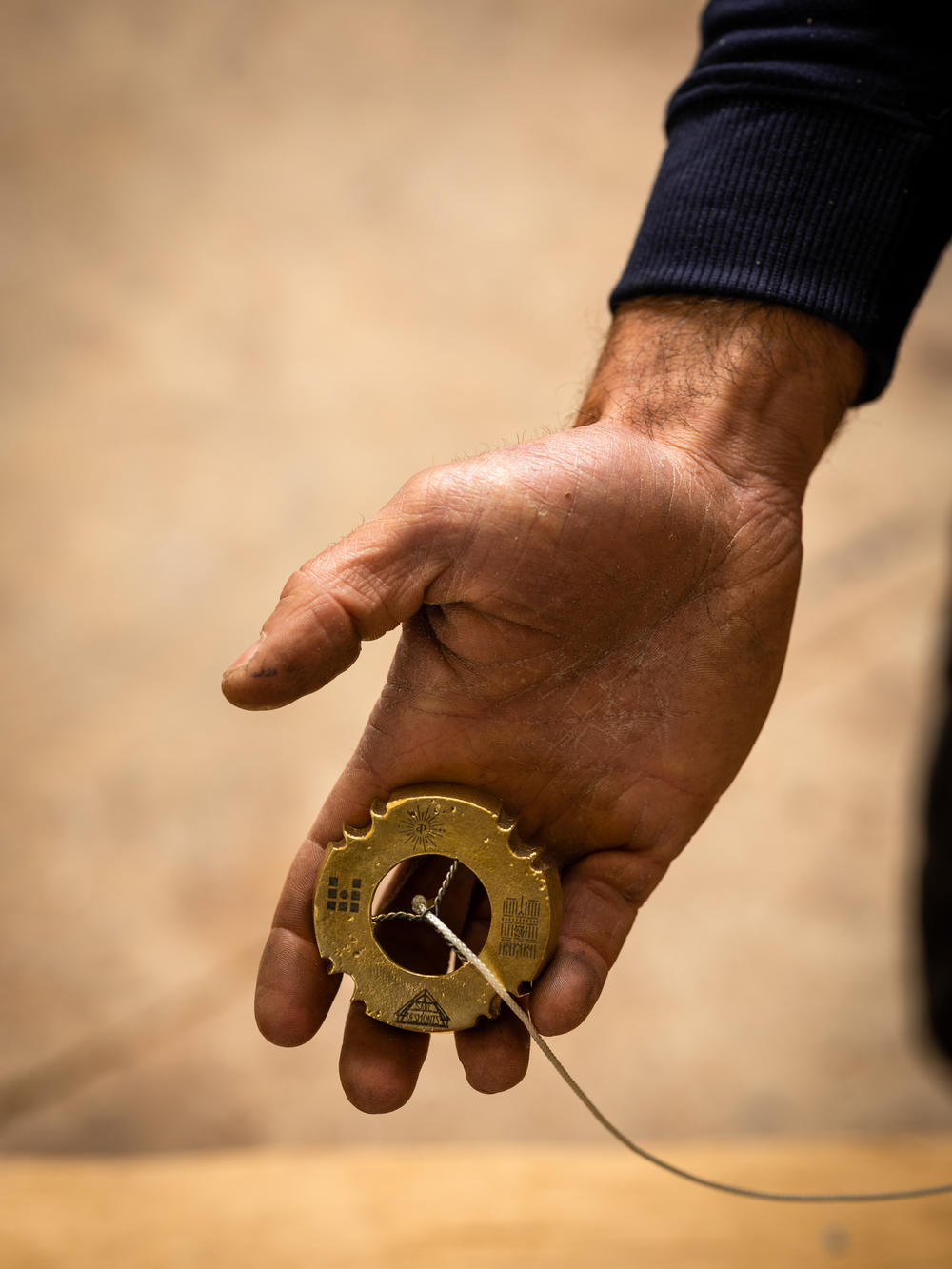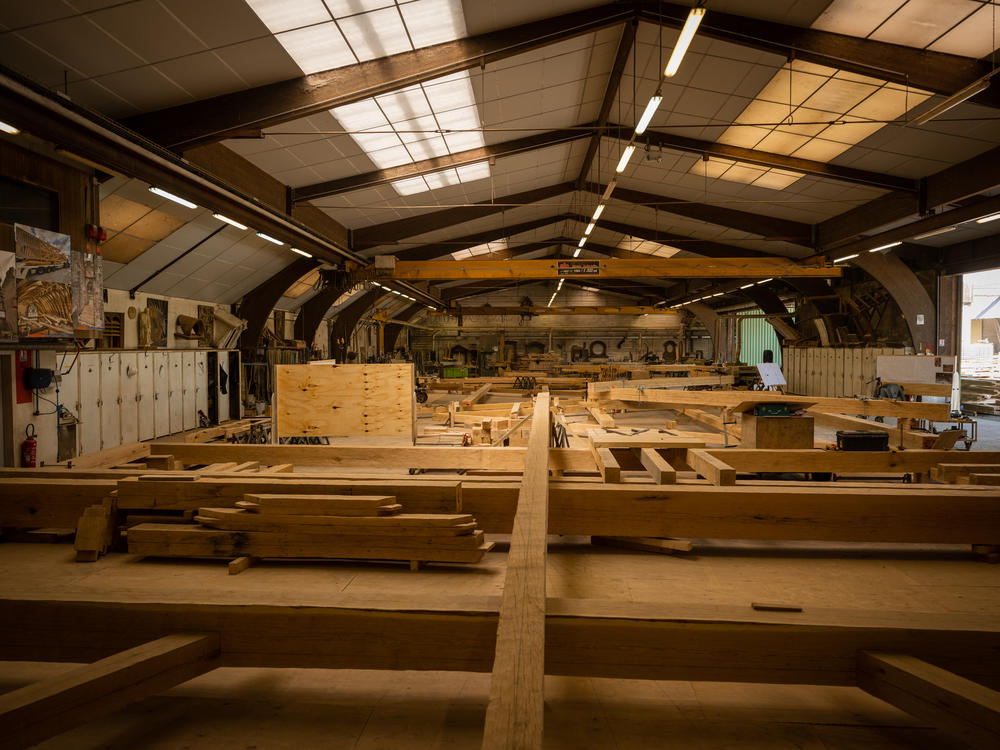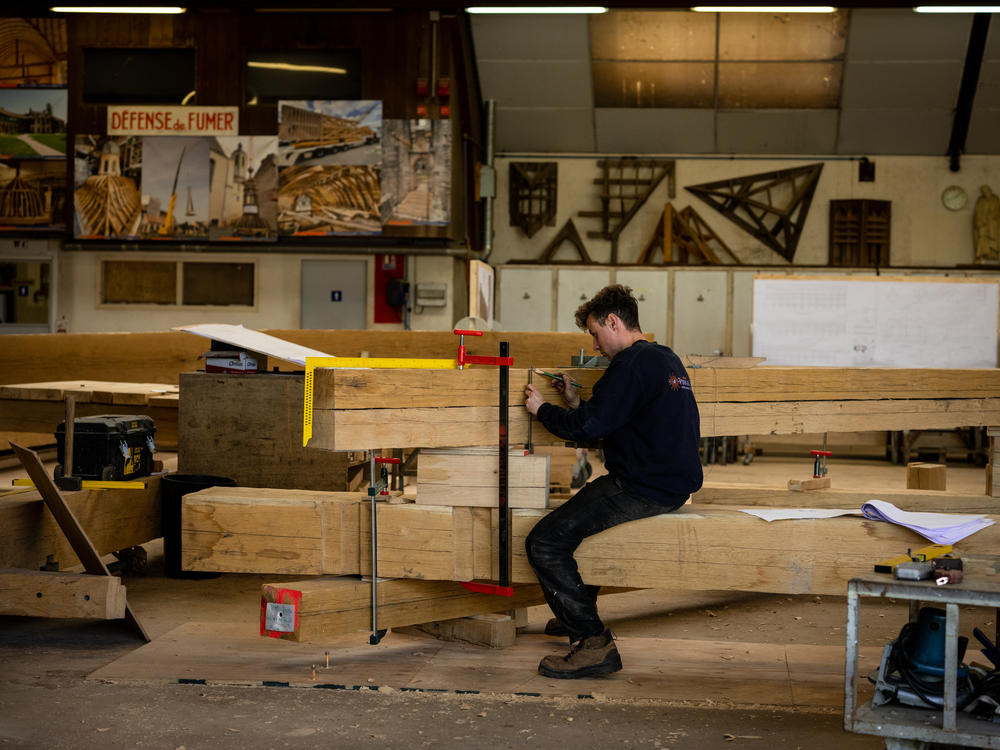Section Branding
Header Content
To rebuild Notre Dame's fire-ravaged roof, carpenters use centuries-old techniques
Primary Content
SAINT-LAURENT-DE-LA-PLAINE, France — The wooden structure supporting the roof of Notre Dame Cathedral was so vast, it was known as "the forest." It burned like a forest too. After the April 2019 fire that badly damaged the Paris landmark, nothing was left of the intricate maze of medieval beams but charred black timbers that pierced the nave and transept as they fell to the cathedral floor, leaving a gaping, smoking hole.
Now that charpente, as the framework supporting the roof is called, is being rebuilt as part of the effort to restore and reopen one of the world's most famous churches by the end of 2024.
At Ateliers Perrault, a 250-year-old carpentry company in France's Loire Valley — one of the two chosen to restore the roof — you don't hear the whirring of electric saws. It's the chopping of axes that resounds as craftsmen transform oak trees into long, rectangular beams by hand.
Carpenter Joseph Canuel explains.
"We made cathedral roofs well before saws and sawmills existed, and this is how it worked," he says. "You got the wood in the nearby forest like we're doing. And sure, we could easily cut these logs into two boards, but keeping the wood fibers the whole length of the beam gives it more resistance."
This company devotes itself to France's historical buildings — some 48,000 of them — so its carpenters are used to working with traditional methods.
Still, Notre Dame is special, says CEO Jean-Baptiste Bonhoure.
"We've never done something like this before," he says. "The roof frame is dating from medieval times — the 12th century — and there's just such a huge volume of wood."
Bonhoure says some 1,400 oak trees are needed for the charpente of the nave, the aisle that leads to the altar, and choir, the part of the cathedral that provides seating for the clergy and choir.
Peter Henrikson is a carpenter from Minnesota who heard about an opportunity to work on Notre Dame through the organization Charpentiers sans Frontières (Carpenters without Borders), a group for those who share a love of traditional methods. He says these hand-hewn trusses are special.
"Taken from the round tree to a square timber all by hand, all with axes," he says, describing what's known as boxed heart timber, where logs aren't split down the middle but the edges are cut, leaving the center.
Once it's installed to hold up the roof, Notre Dame's charpente won't be seen by anyone, says Henrikson.
They could have used faster, modern techniques relying on electric saws, drills, clamps, screws and nails. But he says there is a love of the traditional way of doing things in France, and Notre Dame's 21st century rebuilders wanted to preserve that.
"Redoing the roof as it was also keeps these skills alive," he says.
Rémi Fromont is the head architect in charge of rebuilding the cathedral's charpente. In 2012, he was an architectural student and spent a year on a project to survey the charpente. He and a classmate were the first to take precise measurements and make a detailed plan of "the forest."
"Working inside the massive wooden structure was extremely impressive," he says. "You're in the sky but completely in the dark, so you discovered 'the forest' with flashlight and headlamps, never entirely seeing the whole thing. But you could hear and feel everything going on in the cathedral below — the priests celebrating Mass, the smell of incense. And we were near the belfry, so all of a sudden the bells would ring and resound very strongly. It was as if the cathedral was alive under your feet."
It is thanks to those plans that today's builders know exactly how to reconstruct the charpente, says Fromont. And there are several reasons to rebuild the Gothic masterpiece exactly as it was.
"A cathedral is a structural ensemble that's very complex, and as soon as you change one little thing, one parameter, it impacts everywhere else in the cathedral," he says. "So reconstructing it exactly the same way is also a precaution. It worked very well for 800 years. So we know if we build it back the same way we won't risk damaging the cathedral by trying something new."
Edouard Cortes, another carpenter, removes parchment-thin layers of wood with his ax, which he says was hand-forged out of iron and steel in the traditional way to resemble what Notre Dame's original carpenters would have used nine centuries ago.
Martin Claudel is the expert who made 60 of these axes at the forge, each stamped with an image of the cathedral. Longer-handled axes are for chopping big pieces of wood and taking off the bark, Claudel explains, while others help carpenters hone the wood with precision and give it a smoother, beautiful surface.
"These axes leave a magnificent mark on these beams," Cortes says. "The same medieval mark found on the beams from Notre Dame. For me it is a passion to work with such old tools. You work with your hand, your hatchet, your heart and your head."
A crane lifts one of the giant triangular frames and aligns it next to the others — a dry run before the final installation atop Notre Dame in the coming months. Then, the removable metal pins connecting the trusses will be replaced by permanent wooden mortise and tenon joints. There won't be a single nail, screw or piece of metal in Notre Dame's new medieval roof frame.
Retired Gen. Jean-Louis Georgelin is in charge of the entire project of rebuilding Notre Dame. He says it's important to be faithful to the cathedral's medieval artisans. That spirit is imbuing all the restoration work.
"You have people everywhere in France working to restore the stain[ed glass] windows, working to find the stones, working for the organ, working to restore the masterpiece paintings in the cathedral and here to build the framework, the spire and so on," he says.
To meet the five-year-deadline, Georgelin says they're combining these old methods with the most advanced computer design technology.
"We're restoring a medieval cathedral," he says, but "Notre Dame will also be a cathedral for the 21st century."
Copyright 2023 NPR. To see more, visit https://www.npr.org.
